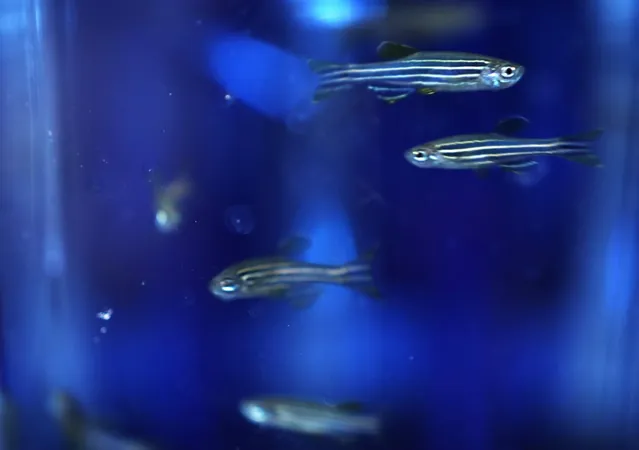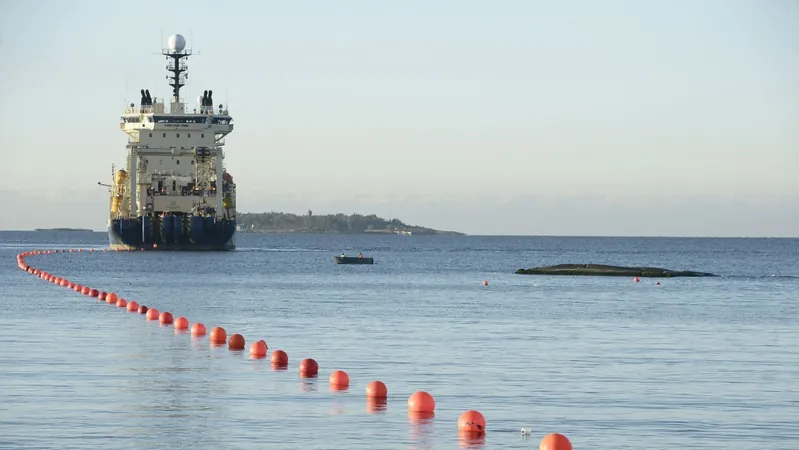
The Game-Changing New Research Facility at UM: How Tropical Fish Could Revolutionize Human Health
2024-11-18
Author: Noah
Overview of the New Research Facility at UM
On November 18, 2024, the University of Manitoba (UM) inaugurated a state-of-the-art $2.5 million research facility poised to transform our understanding of human health through the study of tropical fish. Located at the Bannatyne campus, the newly launched Rady Biomedical Fish Facility is dedicated to exploring the biomedical potential of two fascinating freshwater species: zebrafish and Mexican tetra fish.
Regenerative Abilities of Tropical Fish
What makes these creatures particularly compelling to researchers is their remarkable ability to regenerate lost body parts. When injured, both zebrafish and Mexican tetras can heal themselves—a process that could hold the key to advancements in medicine and regenerative therapies. Furthermore, these fish have a unique capability to grow multiple sets of teeth throughout their lives, which could ultimately inspire future dental treatments aimed at enabling patients to regenerate their own teeth.
Collaboration and Support
Jennifer Cleary, CEO of Research Manitoba, expressed pride in the collaborative effort to establish this facility, highlighting the importance of cutting-edge resources to further medical research.
Facility Features and Resources
The Rady Biomedical Fish Facility currently houses an impressive population of around 2,000 zebrafish and 250 Mexican tetras. The facility features a sophisticated multi-rack holding system equipped to automate and ensure optimal water quality, thus providing an ideal environment for research.
Leading Scientists
Two prominent scientists, Dr. Devi Atukorallaya and Dr. Benjamin Lindsey, are at the helm of this facility. Dr. Atukorallaya, an associate professor of oral biology, and Dr. Lindsey, an assistant professor focused on human anatomy and cell science, spoke of the facility's potential to lead the way in small laboratory fish research across the Prairies. They fervently encourage fellow researchers in Manitoba to explore the numerous applications these fish could have in health research, particularly highlighting their cost-effectiveness compared to traditional mammal models like mice.
Genetic Similarities with Humans
Interestingly, about 70 percent of the genes in these tropical fish are similar to human genes, which further cements their role as vital models in biomedical studies. Dr. Atukorallaya stands out as the only Canadian researcher currently exploring the Mexican tetra fish's unique attributes for health research. Her experiments focus on how these fish can shed light on skull and facial development in human embryos, offering profound implications for understanding congenital malformations such as cleft palate.
The Unique Mexican Tetra Species
The Mexican tetra species is especially intriguing due to its evolutionary adaptations, resulting in two distinct types: the eyeless cave-dwelling fish and their surface-dwelling counterparts. Dr. Atukorallaya’s groundbreaking work includes exposing fish eggs to alcohol to examine developmental abnormalities linked to fetal alcohol spectrum disorders in humans.
Zebrafish in Biomedical Research
Zebrafish, already a staple in global biomedical research, are being utilized to model various human diseases including cancer, diabetes, and heart disease. Dr. Lindsey, whose research revolves around brain and spinal cord injuries, is keenly interested in the zebrafish's ability to self-repair neural tissues. He elaborates on the potential to harness the fish's regenerative capabilities to develop treatments for traumatic brain injuries and neurodegenerative disorders like Parkinson's disease.
Innovative Research Techniques
Utilizing fluorescent tagging techniques, Lindsey’s team can mark specific cells within the zebrafish brains and spinal cords, enabling real-time observation of how these cells behave after injury, further illuminating the mystery of neural plasticity.
Investment and Funding
The Rady Faculty of Health Sciences made a substantial investment of $1.5 million to renovate the facility, complemented by significant funding contributions from Research Manitoba and the Canada Foundation for Innovation, bringing together grants that total over $930,000.
Conclusion
With its unparalleled resources and cutting-edge technology, the Rady Biomedical Fish Facility at UM is set to lead the way in transformative biomedical research, revealing insights that could revolutionize the fields of medicine and dentistry as we know them. Keep an eye on this facility—its discoveries might just change the future of human health!









 Brasil (PT)
Brasil (PT)
 Canada (EN)
Canada (EN)
 Chile (ES)
Chile (ES)
 España (ES)
España (ES)
 France (FR)
France (FR)
 Hong Kong (EN)
Hong Kong (EN)
 Italia (IT)
Italia (IT)
 日本 (JA)
日本 (JA)
 Magyarország (HU)
Magyarország (HU)
 Norge (NO)
Norge (NO)
 Polska (PL)
Polska (PL)
 Schweiz (DE)
Schweiz (DE)
 Singapore (EN)
Singapore (EN)
 Sverige (SV)
Sverige (SV)
 Suomi (FI)
Suomi (FI)
 Türkiye (TR)
Türkiye (TR)